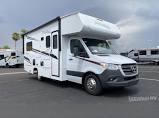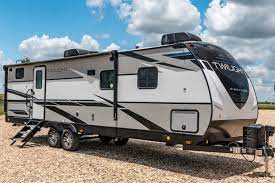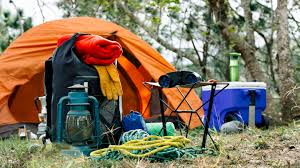The Ultimate Guide to Motorhomes
Motorhomes, also known as RVs (Recreational Vehicles), are a popular choice for travelers seeking the freedom and flexibility to explore the world on their terms. These versatile vehicles combine the comforts of home with the thrill of adventure, making them a favorite among road trip enthusiasts. Whether you’re a seasoned traveler or new to the RV lifestyle, understanding the different types of motorhomes and their features can help you choose the perfect vehicle for your next journey.
Types of Motorhomes
Motorhomes come in various shapes and sizes, each offering unique features to suit different travel preferences. The main types of motorhomes include:
- Class A Motorhomes: These are luxurious, bus-like vehicles that offer ample living space, full kitchen and bathroom facilities, and often come equipped with amenities such as slide-outs and entertainment systems.
- Class B Motorhomes (Camper Vans): Compact and easy to maneuver, these motorhomes are built on van chassis and provide basic living amenities in a smaller space.
- Class C Motorhomes: Characterized by a distinctive cab-over bunk area, Class C motorhomes offer a good balance between size and amenities, making them popular among families.
- Travel Trailers: While not technically motorhomes, travel trailers are towed behind a vehicle and offer similar amenities to motorized RVs. They come in various sizes and configurations to accommodate different needs.
Features of Motorhomes
Modern motorhomes are equipped with a range of features designed to enhance comfort and convenience on the road. Some common features include:
- Kitchen Facilities: Most motorhomes come with a kitchen area complete with a refrigerator, stove, microwave, and sink for preparing meals on-the-go.
- Bathroom Facilities: Many motorhomes have full bathrooms with toilets, showers, and sinks for added convenience during travel.
- Sleeping Areas: Depending on the size of the motorhome, sleeping accommodations can range from cozy beds to spacious master suites.
- Lounge Areas: Living spaces in motorhomes can include dinettes, sofas, or recliners for relaxing after a day of exploring.
- Awnings and Outdoor Spaces: Some motorhomes feature retractable awnings or outdoor living areas for enjoying the scenery outside.
The Freedom of Motorhome Travel
One of the greatest advantages of traveling in a motorhome is the freedom it offers. With your home on wheels, you can explore new destinations at your own pace, change plans on a whim, and immerse yourself in nature without sacrificing comfort. Whether you prefer national parks, coastal drives, or off-the-beaten-path adventures, a motorhome allows you to experience it all without being tied down by hotel reservations or flight schedules.
In conclusion,motorhomes provide an unmatched combination of comfort,convenience,and freedom for travelers seeking unforgettable adventures on the open road. Whether you’re embarking on a cross-country journey or simply escaping for a weekend getaway,a motorhome can be your ticket to experiencing the world like never before.
Your Complete Guide to Motorhomes: Types, Size Selection, Amenities, Driving Tips, and Parking Essentials
- What are the different types of motorhomes available?
- How do I choose the right size motorhome for my needs?
- What amenities are typically included in a motorhome?
- Is it difficult to drive a motorhome?
- Where can I park or camp with a motorhome?
What are the different types of motorhomes available?
One of the most commonly asked questions about motorhomes is, “What are the different types of motorhomes available?” Motorhomes come in various configurations to cater to different travel preferences and needs. The main types include Class A motorhomes, known for their luxurious amenities and spacious interiors; Class B motorhomes, also called camper vans, which offer compact yet functional living spaces; and Class C motorhomes, characterized by their distinctive cab-over bunk area. Additionally, there are travel trailers that provide similar amenities to motorized RVs but are towed behind a vehicle. Understanding the differences between these types can help travelers choose the perfect motorhome for their next adventure.
How do I choose the right size motorhome for my needs?
When selecting the ideal size motorhome for your needs, it’s essential to consider factors such as the number of travelers, desired amenities, and preferred travel destinations. A larger motorhome offers more living space and amenities but may be challenging to maneuver in tight spaces or on narrow roads. On the other hand, a smaller motorhome is easier to drive and park but may have limited interior space. Assess your travel style, comfort preferences, and budget to determine the right balance between size and functionality that best suits your needs. Researching different models and test-driving various sizes can help you make an informed decision tailored to your specific requirements for a comfortable and enjoyable journey.
What amenities are typically included in a motorhome?
When it comes to amenities in a motorhome, travelers can expect a range of features that enhance comfort and convenience on the road. Common amenities found in motorhomes include fully equipped kitchen facilities with a refrigerator, stove, microwave, and sink for preparing meals. Bathroom facilities often consist of toilets, showers, and sinks to provide essential comforts during travel. Sleeping areas vary depending on the size of the motorhome, offering cozy beds or spacious master suites for a restful night’s sleep. Additionally, lounge areas with dinettes, sofas, or recliners provide a relaxing space to unwind after a day of exploration. Some motorhomes may also include outdoor living spaces or awnings for enjoying the surrounding scenery. Overall, motorhomes are designed to offer a home-away-from-home experience with all the necessary amenities for a comfortable journey.
Is it difficult to drive a motorhome?
One frequently asked question about motorhomes is, “Is it difficult to drive a motorhome?” Driving a motorhome can be intimidating for those new to RV travel, especially due to their size and weight. However, with practice and proper preparation, many people find that driving a motorhome becomes more comfortable over time. Factors such as the type of motorhome, road conditions, and driver experience can all play a role in how challenging it is to drive. Taking a safety course, familiarizing yourself with the vehicle’s controls, and practicing in less crowded areas can help build confidence behind the wheel of a motorhome.
Where can I park or camp with a motorhome?
Finding suitable parking or camping spots for your motorhome is a common concern among RV enthusiasts. Fortunately, there are various options available depending on your preferences and needs. Many campgrounds and RV parks across the country offer designated spaces with hookups for water, electricity, and sewage disposal. State and national parks also often provide RV-friendly campsites surrounded by nature’s beauty. Additionally, some rest areas, truck stops, and even certain retail stores allow overnight parking for RVs. It’s essential to plan ahead, research potential locations, and always respect local regulations to ensure a safe and enjoyable experience while parking or camping with your motorhome.




